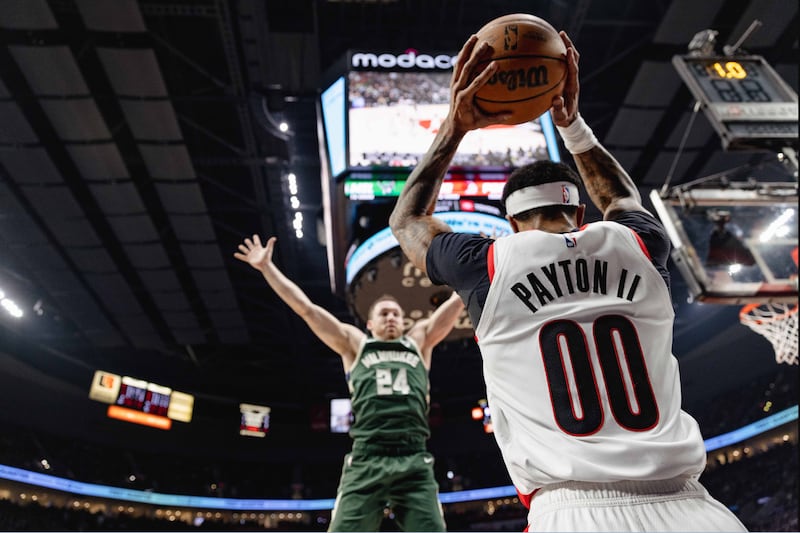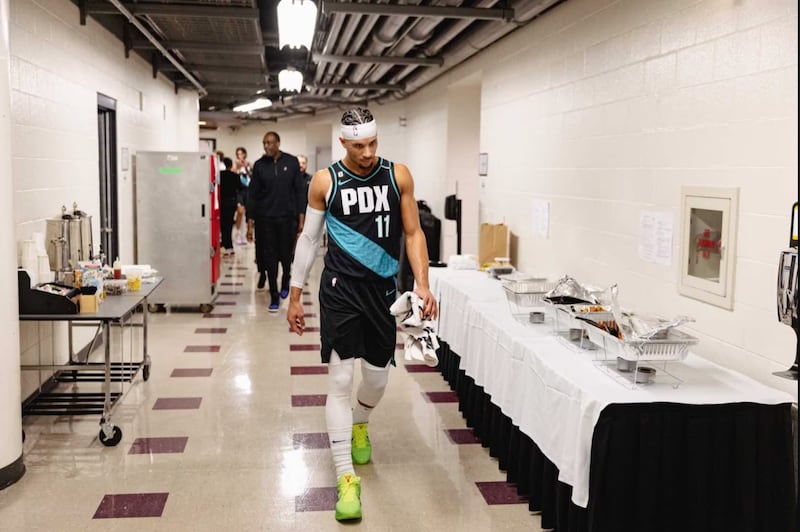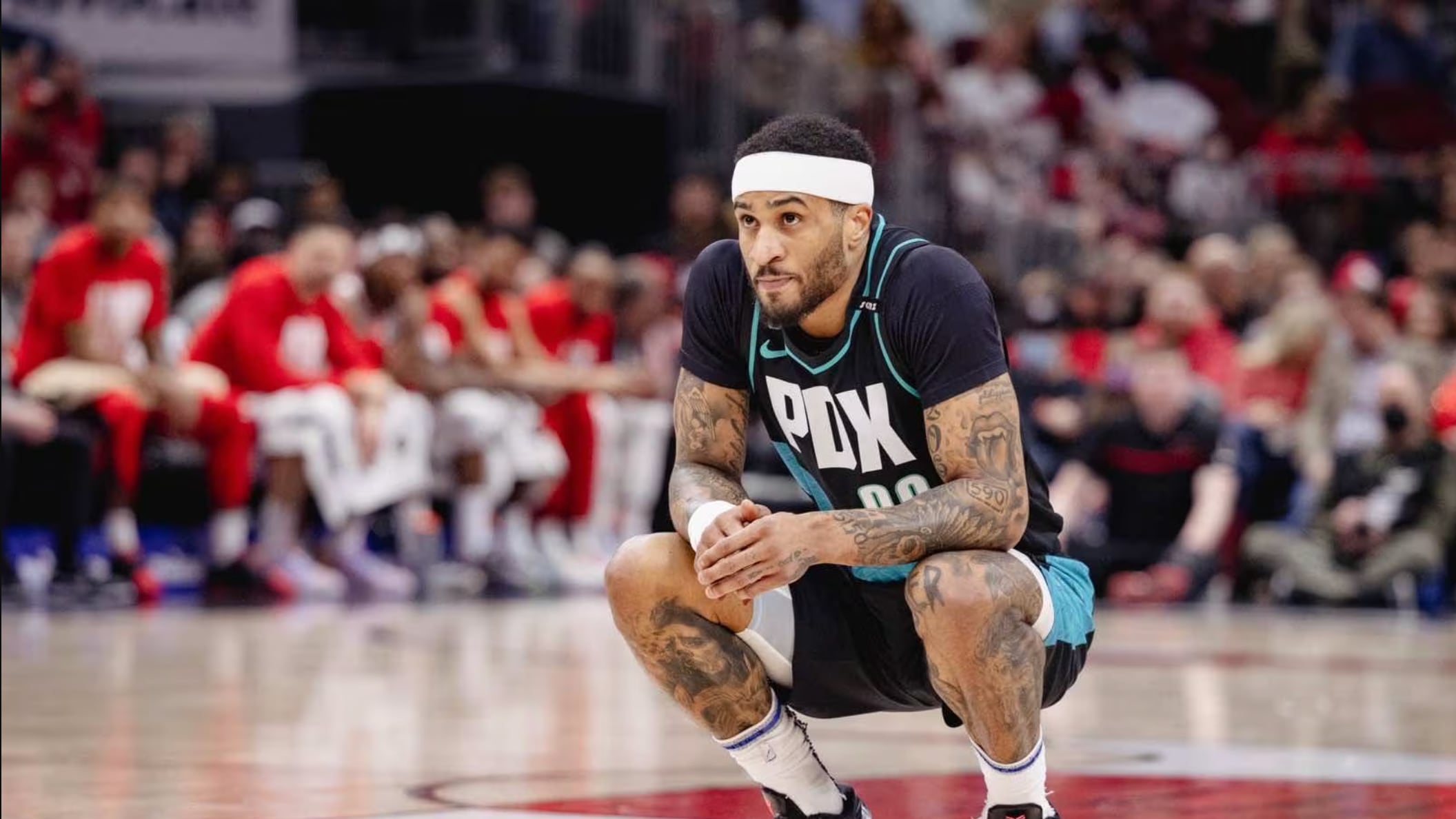The Portland Trail Blazers almost made it through the season without embarrassment. Almost.
At first, Feb. 9 looked like a relatively uneventful trade deadline for the franchise. For better or worse, general manager Joe Cronin settled for lesser transactions, swapping out Josh Hart and Gary Payton II for defensive specialist Matisse Thybulle and multiple future draft picks. A serviceable, if unspectacular, outcome.
Then news leaked out of the Bay Area on Friday afternoon that the Golden State Warriors may veto the Payton II trade, wiping out five second-round picks and sending Payton back north to PDX. The issue: Payton II failed a league-mandated physical.
Anthony Slater and Shams Charania of The Athletic reported that Portland’s training staff had told Payton II to “gut through” pain as he recovered from offseason hernia surgery. The same leaker claimed the Blazers also encouraged Toradol shots. That’s an anti-inflammatory, often used in the days after surgery.
When asked about the accusations, Cronin seemed to deny them. “Player safety is super important to [the team], it’s super important around the league,” he said. “[Payton II] was cleared, and we were confident he was healthy when he played. We wouldn’t have brought him back if we thought he wasn’t healthy, or if he was at risk.”
This afternoon, Payton II’s agent, Aaron Goodwin, backed up that denial—his client had not received Toradol in order to take the court, he told Chris Haynes.
Needless to say, if the claims are true, they would constitute a pitiful display from the Blazers. That’s doubly so after the team spent the past two years mired in controversy: everything from tax fraud arrests to independent investigations into alleged abhorrent behavior from high-level employees.
The severity of this dispute and consequences for the Blazers remain to be seen—the Warriors have until Sunday evening to make a final decision. Either way, the league will have the option to punish Portland if it judges the Blazers withheld medical information. Longtime fans will remember the franchise was fined $1.5 million for failing to alert the Timberwolves of a Martell Webster injury in 2010.
The two parties who have put their reputations on the line with on-the-record quotes—Cronin and Goodwin—both deny the Warriors’ anonymous story. But if the Blazers pressured Payton II to play through pain, Portland was doing so for an illusion.

The dream
“We want to be championship level as soon as possible,” Cronin said Friday. “We’re borderline anxious to push all our chips in. We can’t wait for that moment to happen. It just hasn’t come up yet.”
The Blazers apparently fancy themselves as one move away from contention. The reality of the trade deadline, however, paints a different picture.
Consider the logic behind Cronin’s moves:
· Hart was likely to leave Portland as a free agent this summer; converting his contract to a first-round draft pick is solid asset management.
· Thybulle had fallen out of the rotation with the 76ers but is an excellent point-of-attack defender. That’s a skill the Blazers sorely need. Adding Thybulle without sacrificing much else is a net win.
· The Blazers now hold the rights to the New York Knicks’ 2023 first-round pick—this pick becomes four second-rounders if the Knicks miss the playoffs—and netted three additional second-rounders, assuming the Warriors ultimately approve the Payton II trade. (Full details of both trades can be found here.)
It’s certainly disappointing the Blazers could not work out a larger trade for someone like OG Anunoby or Pascal Siakam—two impact veterans reportedly on the way out in Toronto. But picking up draft capital in exchange for players who do not fit a long-term vision is solid administrative work. Rote transactions like that were routinely botched under Cronin’s predecessor, Neil Olshey.
The downside is that the clock just struck midnight on any hope of a Cinderella playoff run in 2023. Several of the Blazers’ glaring problems were not addressed and, if anything, worsened. They’re still undersized, very poor defensively, need another outside shooter or two, etc.
Meanwhile, multiple teams around them in the standings—notably the Lakers, Warriors and Mavericks—all improved. That’s not encouraging for a team that has hovered around 10th or 11th in the conference all season.

The reality
Now for the reality check. There’s a word for teams that trade rotation players for draft picks and miss the playoffs in consecutive seasons. Rebuilding.
The Blazers, however, are never going to admit that reality. They can’t. Not with Damian Lillard arguably playing the best ball of his career at age 32. Instead, they are trying to thread a needle and accelerate the rebuild by retaining several of their starters. That means Cronin has to build a contender, immediately, without the flexibility of cap space, which, in turn, necessitates that nearly every move works out perfectly.
Every move has not worked out perfectly. Jerami Grant, rookie Shaedon Sharpe, and Drew “The Shaq of Troutdale” Eubanks have been sensational. The rest of the supporting cast has not. Nassir Little’s four-year extension kicks in this summer, but he remains a sieve defensively. Hart didn’t mesh well enough to justify re-signing. Jusuf Nurkic is still maddeningly inconsistent.
None of this is a disaster. Normally. This season is about talent evaluation, so finding out which players do or don’t fit is fine. The bigger issue is that figuring out how to fill out the bench after this season’s failed experiments AND putting together the Big Trade package is still going to take at least a couple more offseasons. Not even LeBron James and Anthony Davis have been able to win a playoff series, let alone a championship, without a supporting cast.
Which brings us back to Payton II. He was supposed to be a signature free agent signing that declared the Blazers could attract talent to surround Lillard. He was the player that would clog the holes in the dam defensively and help head coach Chauncey Billups ease Lillard’s offensive burden.
Now, whether Payton II returns or not, he serves as a neon warning sign to other free agents. Until the story of doctors shooting him up to play is refuted, it becomes the unspoken subject of every conversation Cronin has with a player or rival front office.
It’s still possible to thread the rebuilding needle without bottoming out. Contending by 2025 remains feasible (in theory). But the shot clock on Lillard Time is ticking. That clock will become a time bomb if the Blazers don’t successfully defend their reputation.
Double Dribbles:
· It seems likely the Blazers are no longer fully vaccinated.
· Other players added to the roster include Cam Reddish, Ryan Arcidiacono, and Kevin Knox.
· Feel free to be excited about Reddish. Just don’t expect much. He’s still on a rookie contract but has already been traded by the Hawks and Knicks. Not encouraging.
· Greg Brown III was cut to create a roster spot for the new additions.
· The trades saved Portland saved several million in payroll. They weren’t over the luxury tax threshold to begin with, so that’s largely immaterial. Ownership did save some money, so congrats to them.

